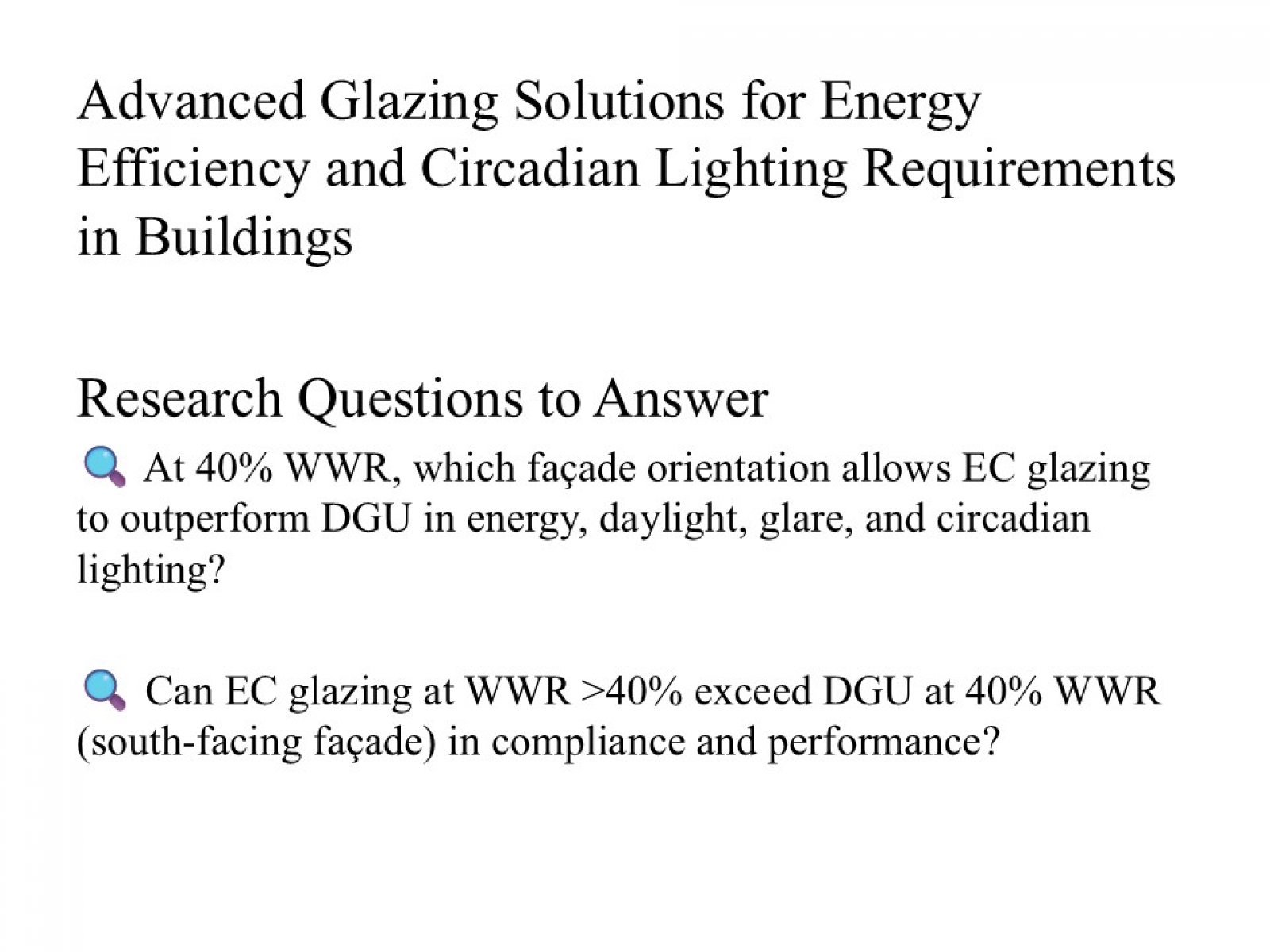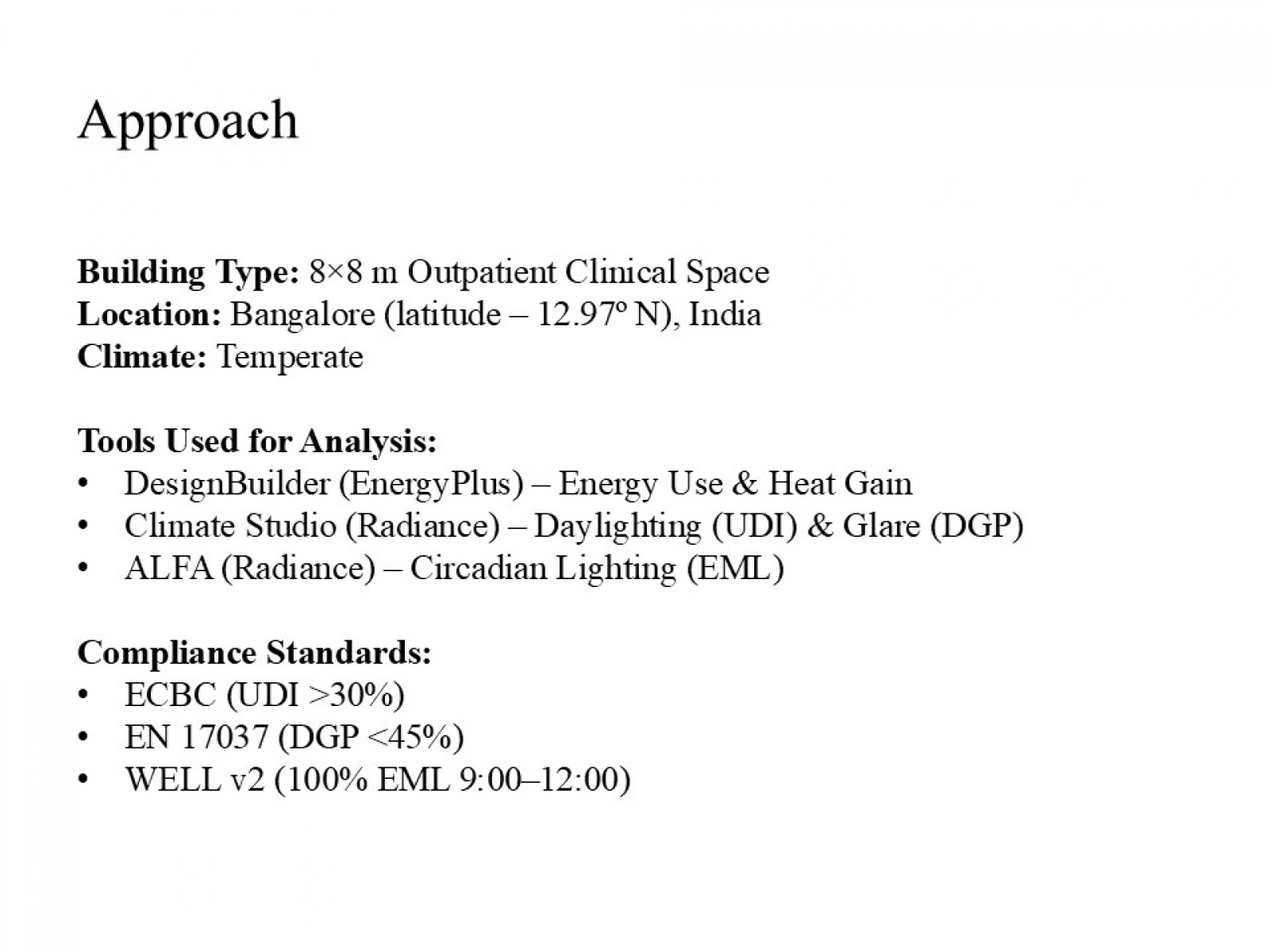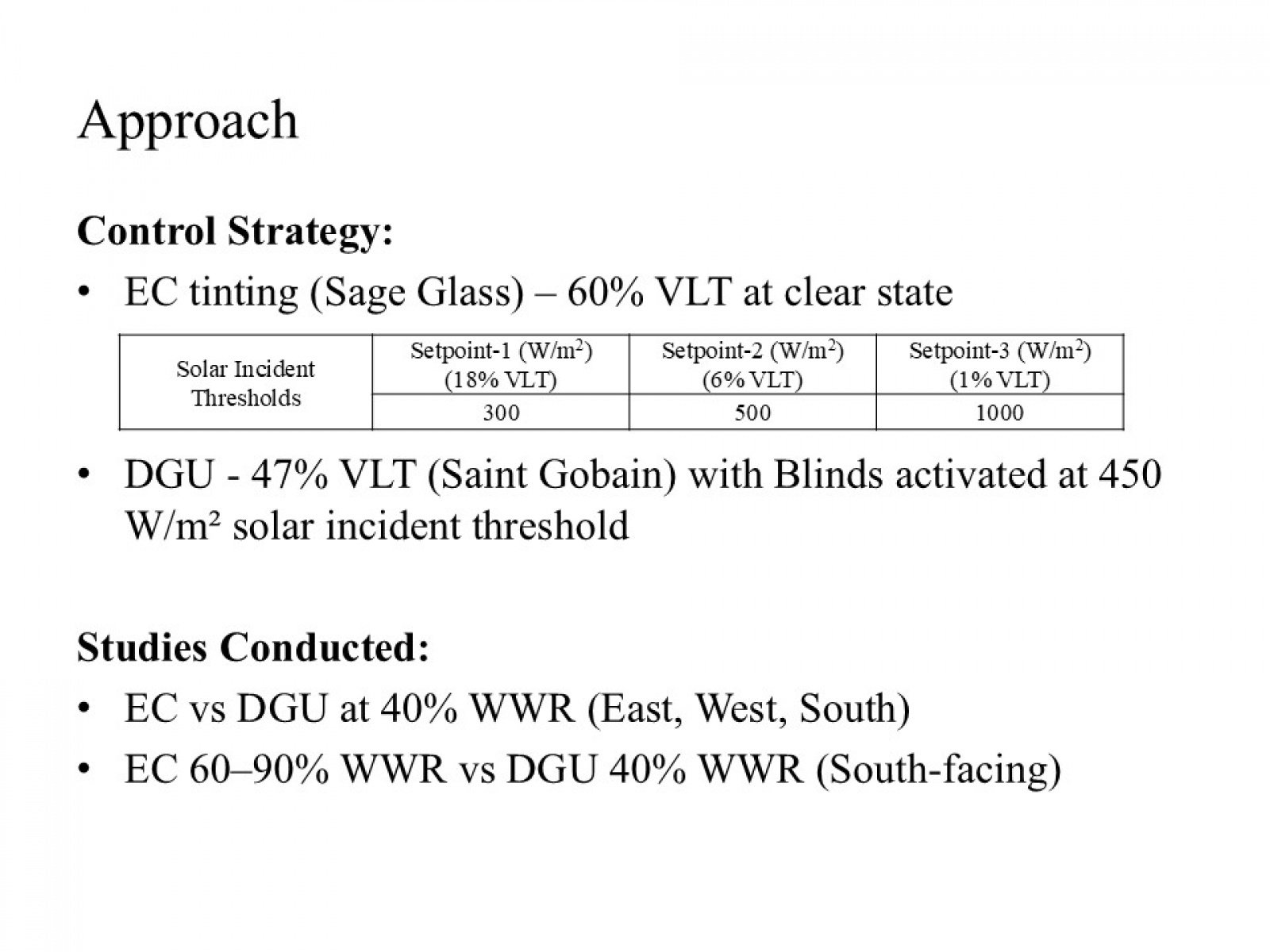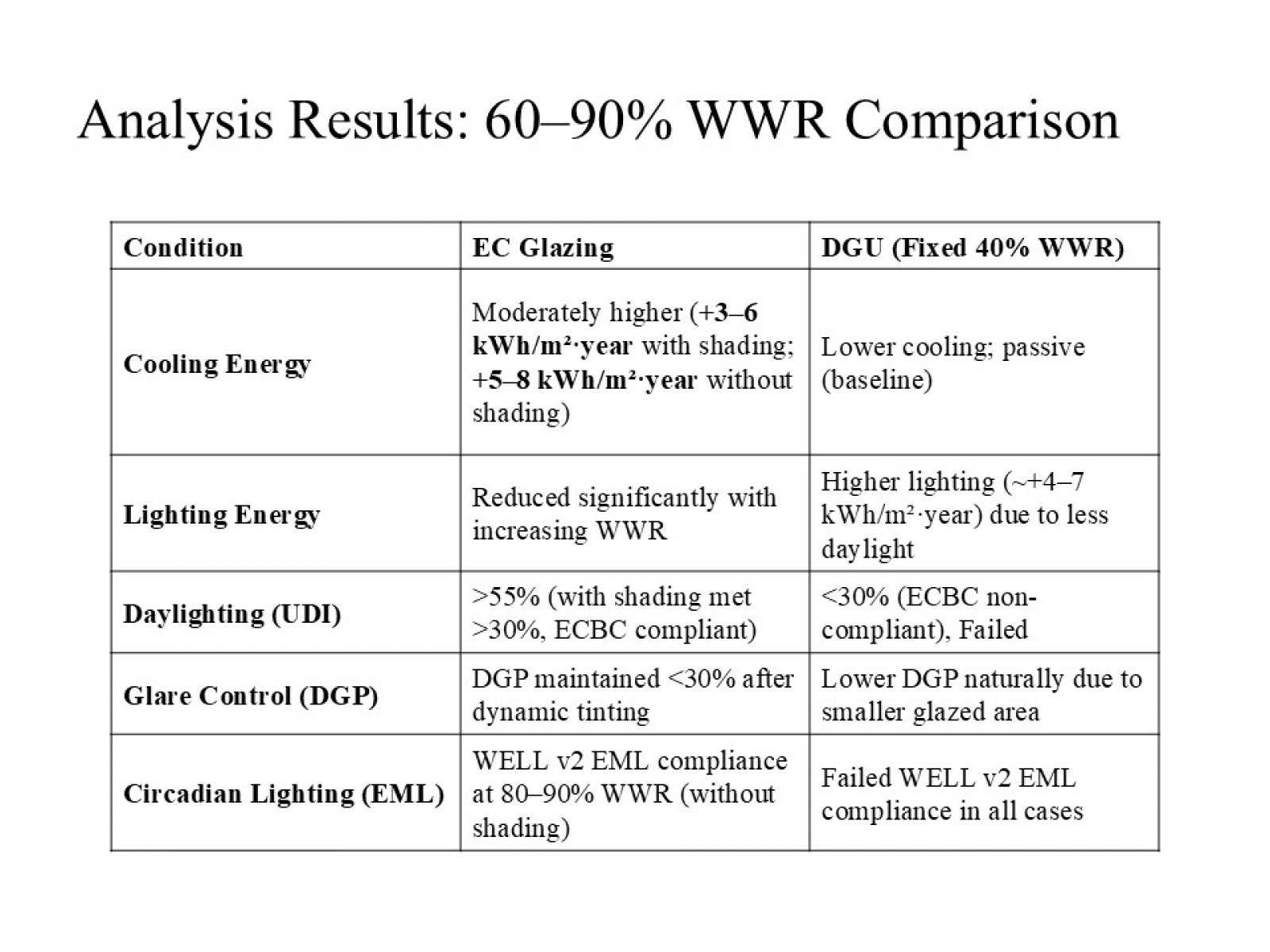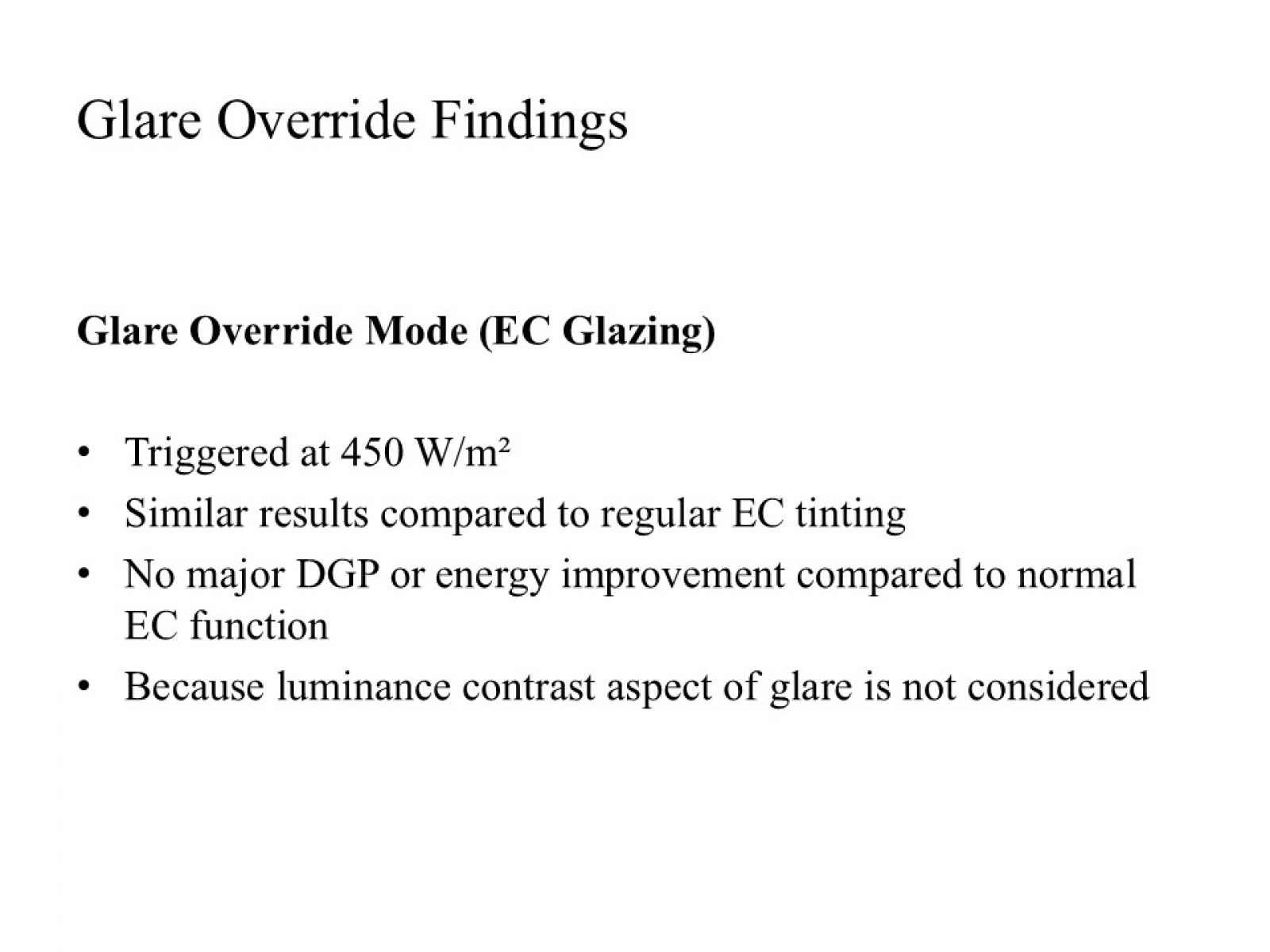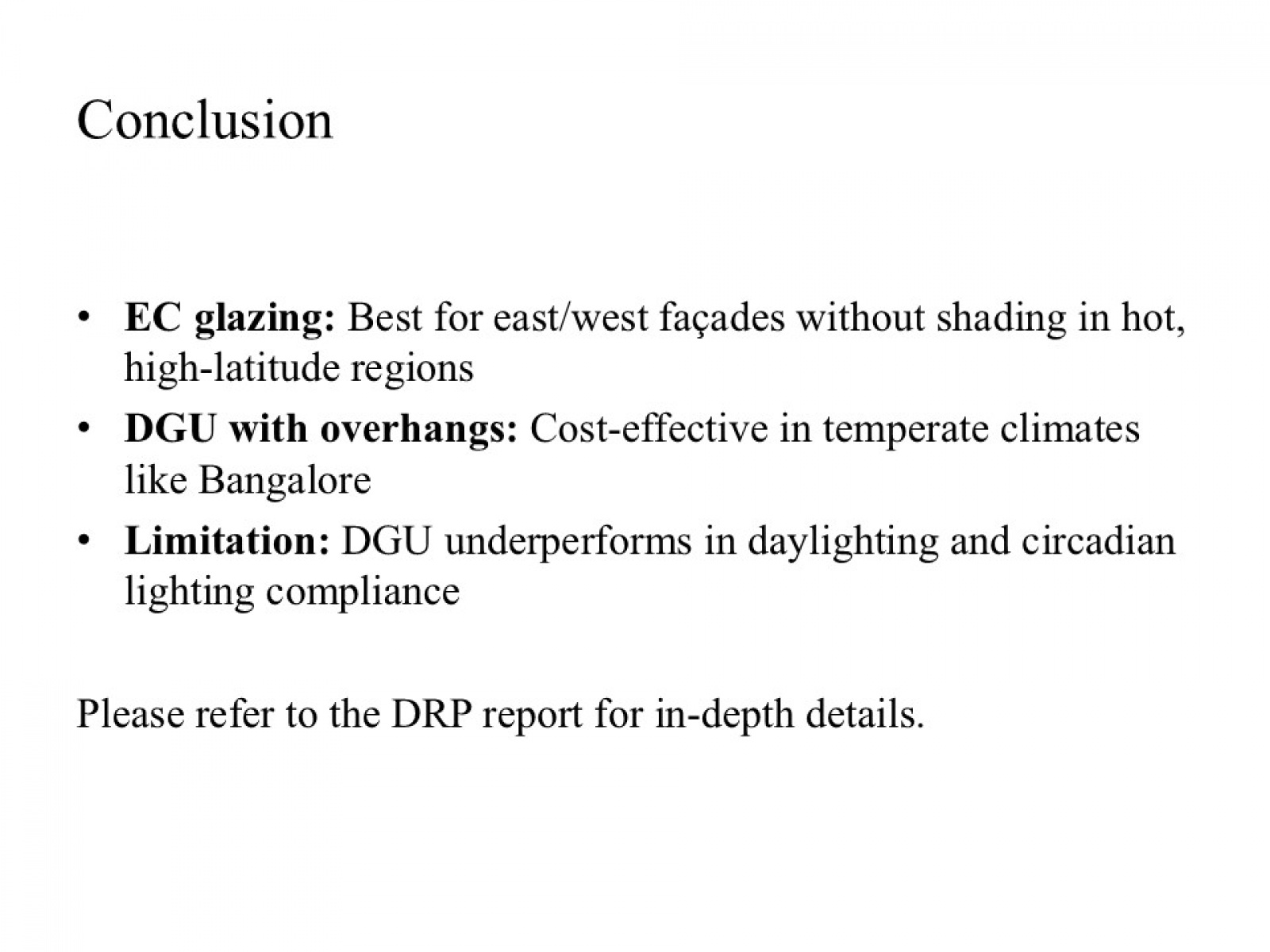Your browser is out-of-date!
For a richer surfing experience on our website, please update your browser. Update my browser now!
For a richer surfing experience on our website, please update your browser. Update my browser now!
This study evaluates electrochromic (EC) glazing in a healthcare outpatient building in Bangalore for its effectiveness in reducing heat gain and glare while supporting circadian lighting. Simulations using DesignBuilder, Climate Studio, and ALFA analyzed energy, daylight, and circadian metrics. EC glazing maintained low glare (DGP < 45% for 95% of hours) and improved daylight access, though frequent tinting limited melanopic lux. Compared to DGU, EC glazing performed better on east and west façades and achieved higher compliance on south façades with high WWR and no shading. The results highlight the need for integrated daylight-shading strategies in temperate climates for optimal outcomes.
View Additional Work